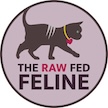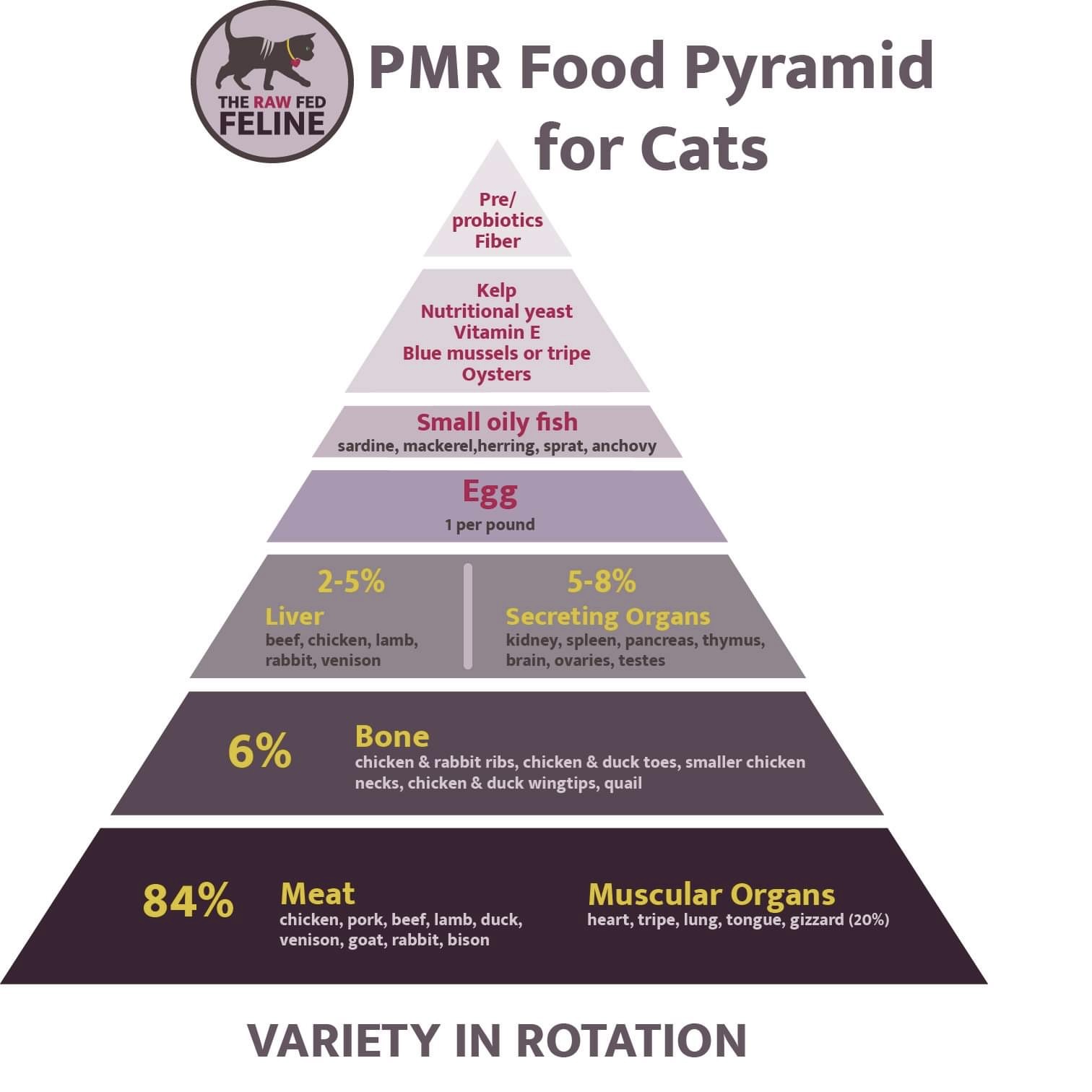Making homemade food for your cat can seem really overwhelming at first. It is a big step in taking control of your cat’s diet and health. There can be a lot of pressure to not make your cat’s food. This pressure can come from pet food manufacturers, your veterinarian, even from your well meaning family and friends. But why is it such a crazy idea to want to make homemade food for your cat? We know that eating homemade food ourselves is significantly healthier than eating out. Doctors urge people to stay away from highly processed foods to stay healthy. We are encouraged to eat whole fresh foods as much as possible for the myriad health benefits from doing so. Why is this not encouraged for our cats? And why are we thought to be incapable of doing this?
This post will be the first in a series about making your cat’s food using prey model raw guidelines.
Why not make homemade food?
pet food manufacturers
Well, for one thing, it would not be good for the pet food business if everyone started making their cats’ food. These companies spent over a BILLION dollars marketing their products to us in 2020. They want to convince us that their food is the best thing we can feed our cats. That their company is the only one who understands what to feed cats. That the ingredients don’t matter, only nutrients matter. That we could never make “complete and balanced” food for our cats and will harm them. There is a clear conflict of interest here. These companies are in the business of making money. Lots of money. This means their focus is on making foods that are good for their bottom line, not necessarily the best for our cats.
veterinarians
Veterinarians can be discouraging of us making our pets’ food, too. This can be for a very good and important reason. Vets will be the first ones to see the negative effects of feeding grossly imbalanced diets. Raw feeding does not mean just giving your cat some meat. You will end up with a very sick cat. Vets do not want to see that happen. Working with your vet and talking through what you are feeding and why can be a good start. Some vets will be more open to working with you and some will not.
Sadly, the American Veterinary Medical Association (AVMA) is firmly against raw feeding. This is a big reason why many American vets adopt an anti-raw stance. Shockingly, the AVMA is the only medical organization that discourages feeding whole fresh foods and encourages feeding an ultra processed commercial diet. What??!!
There is a UK organization, the Raw Feeding Veterinary Society (RFVS), who has their own response to critics of raw feeding. So, not all vets are anti-raw and many see the benefits. But it is important to communicate how you are making the food and how you take care to feed raw foods safely.
There is a massive disconnect between what vets learn regarding feline physiology and digestion in school with what foods they recommend in their practice. Unfortunately, pet food companies have a large influence when it comes to American veterinary schools. So, at the end of the day, you may have to agree to disagree with your vet when it comes to your cat’s diet.
We can do this
But where does this leave you if you want to make homemade food for your cat? How do you know what to feed? Let me ask you this—how do you know what to feed yourself or if you have them, your children? Are you worried about not eating a 100% properly balanced diet? We all have an understanding that we need to eat fruits, vegetables, healthy grains, etc. We aren’t calculating every nutrient in each food we eat. But we do have a general idea of what we should be eating. We learn this growing up, in school, and from what we read or watch.
What is this information based on? Mainly, the Food and Drug Administration (FDA)’s recommendations. The FDA has put out the Food Pyramid for years. They recently changed it to My Plate. This gives us an idea of what and how much we should be eating for a healthy diet. We can do the same with our cats. They are a different species than us, so their food pyramid will look different, but the concept is the same.

PMR Food Pyramid for Cats
main ingredients
Here is my version of a Feline Prey Model Raw (PMR) Food Pyramid. This pyramid has a cat friendly ratio of 84-6-10 based on the average ratios of cats’ whole prey. This means that the diet will consist of 84% meat and muscular organs, 6% bone, and 10% secreting organs. The base of the pyramid has the meat that our little carnivores need to survive. Next up are the bones or bone substitutes. Then liver and other secreting organs. Eggs are always good to include for their nutrient profile.
whole food additions
As we move up the pyramid, we come to some whole food sources that are added to round out the diet. These items on the pyramid are included at approximately 1 oz per 16-20 oz of food. Small oily fish are great for vitamin D and a source of omega-3 fatty acids. Oysters provide a source of zinc and taurine. Red meats, especially lamb, also provide zinc. So you do not need to include oysters when feeding red meats. Blue mussels or tripe provide manganese.
supplements
As we continue up the pyramid, we come to some other supplements. Vitamin E is especially important to include when feeding fish. Vitamin E protects from oxidation. It is best supplied by an oil. The Solgar and NOW brands are popular. You usually only need to add a drop of vitamin E every 2-3 days. This has a handy calculator to determine how much vitamin E to include for your cat.
Nutritional yeast is a nice source of B vitamins. Cats have a high requirement for B vitamins in their diet. 1 tsp per 16-20 oz of food spread over several meals will suffice.
Kelp is included as a source of iodine. You want to be very careful when supplementing iodine. There is research indicating that the current NRC recommendations for iodine are too high. A recommendation from Paws of Prey that is more in line with that research is 115 mcg per 20 oz of food. The NOW brand of kelp is recommended as it has been third party tested for heavy metals. If you are feeding fish and/or whole prey regularly in your cat’s diet, then I would not supplement additional iodine as your cat is ingesting the animal’s thyroid gland and getting their iodine needs in that way.
optional
At the very top of the pyramid are some optional additions to the diet. Pre/probiotics can be very helpful for gut health. This is especially true when transitioning to a new diet or if antibiotics have been given previously. Some cats benefit from the inclusion of fiber in the diet and some don’t need it. This is dependent on the individual cat. A small amount of cooked leafy greens (1-2% of the diet) can be offered for fiber. Psyllium husk is also a popular source of fiber. Fur is a nice animal based source that you can offer for fiber, too.

Importance of variety
I hope that you can see that PMR feeding doesn’t have to be over-the-top complicated. Yes, there is some basic knowledge and understanding needed. Once you determine your initial ratios, then you use those numbers moving forward. You don’t have to recalculate them all the time if your cat maintains their weight. Check out this post for an example of how to determine your cat’s ratios. You want to feed meat, bone, organs at the appropriate percentages. Include egg, oily fish, then some whole food and supplement additions. That’s it.
But let me tell you one of the most important parts of this diet and really any other: variety. Feeding a variety of foods in rotation is key. Each meat and organ has a different nutrient profile. Offering a variety of different meats, different hearts, livers, kidneys, fish, etc. is one of the best ways to feed a well rounded diet.
We really are more than capable of feeding our cats healthy homemade food, just like we are capable of feeding ourselves. Fresh whole, species appropriate foods in proper ratios fed in rotation. Deep breath. You can do this.
The next blog post will be about the bottom of the pyramid: meat and muscular organs. Stay tuned!


